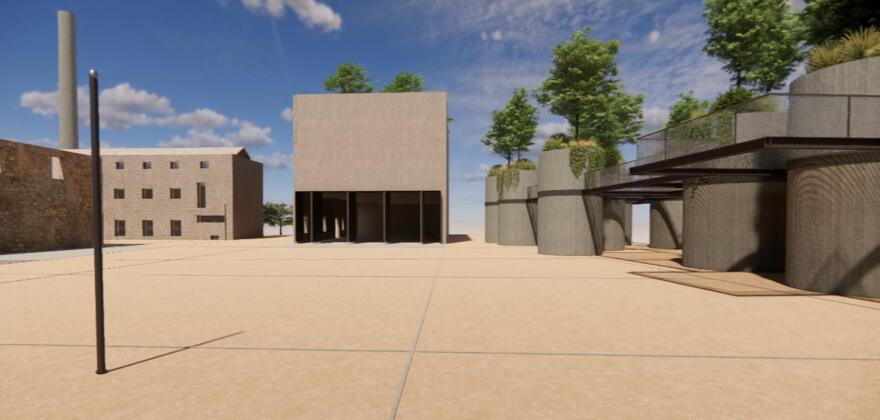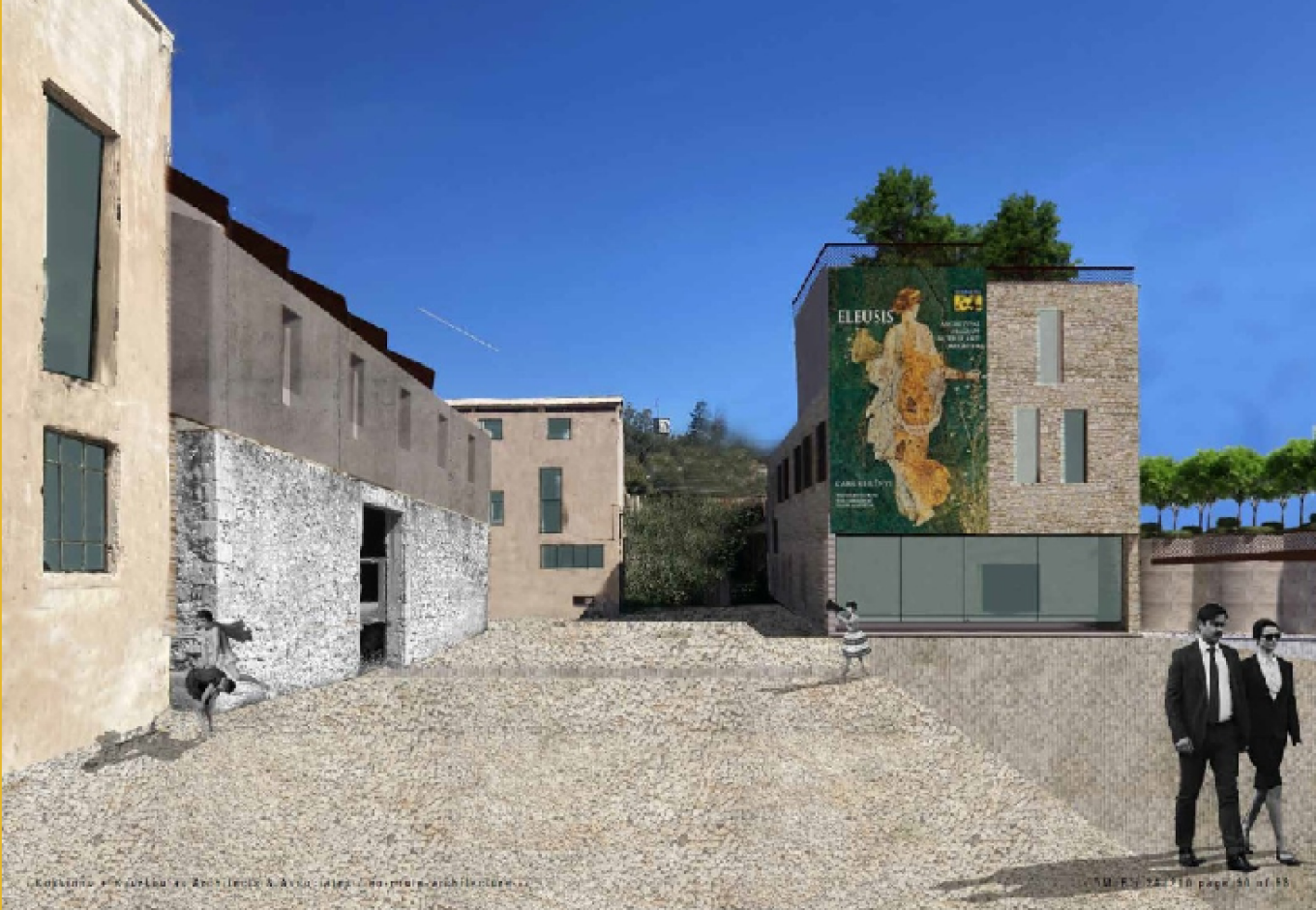The ambitious project to convert the Old Oil Mill of Elefsina into a cutting-edge Diachronic Museum has officially entered the implementation phase. This museum will showcase the extensive findings from excavations at the Sanctuary of Demeter and Kore, which is now the Elefsina archaeological site, alongside artifacts from ongoing rescue excavations throughout the city.


The museum will be situated in the former industrial complex “BOTRYS–ELAIOURGEIO,” located south of the archaeological site. This complex was first established as the Harilaou Soap Factory in 1875, the first factory in Elefsina, and operated until 1960. The site, which was previously owned by the National Bank of Greece, was acquired by the Ministry of Culture in 2022 for €5 million to serve as the new museum’s location.
“With the Central Archaeological Council’s approval of the architectural study, this visionary project for Elefsina is entering its final design and execution phase. The Old Oil Mill complex embodies the industrial, economic, and cultural narrative of Elefsina. Since 1995, it has hosted the unique cultural festival, Aeschylia, and contributed significantly to the European Capital of Culture ‘Eleusis 2023,’” stated Minister of Culture Lina Mendoni. She further emphasized, “Elefsina deserves a Diachronic Museum that reflects its rich history and archaeological heritage. The establishment of this museum, in conjunction with extensive archaeological projects funded at over €8 million at the Elefsina site, creates a cultural entity that bridges the city’s past and present. This initiative will provide Elefsina with essential cultural infrastructure that enhances its identity and offers significant developmental benefits.” Mendoni extended her gratitude to the Pavlos and Alexandra Kanellopoulos Foundation for their generous support of the necessary studies.
The “ELAIOURGEIO” facility, located between the shoreline and the archaeological hillside, was known for producing various oils and Marseille-style soaps. In 1892, a change in management led to its renaming to “Charilaos – Kanellopoulos S.A.” as “ELAIOURGEIO,” ceasing operations in the late 1960s.

The new museum, positioned along the coastal front south of the “BOTRYS” factory, addresses a longstanding need identified since 1989 for a facility dedicated to Elefsina’s history. The city plan for the “BOTRYS–ELAIOURGEIO” area was revised in 2020 to accommodate new land uses. In 2023, part of the Old Oil Mill was temporarily allocated by the Ministry of Culture to the municipal company “2023 ELEUSIS” for events during the Capital of Culture initiative. In 2024, funding from the Pavlos and Alexandra Kanellopoulos Foundation enabled the development of plans to transform the Old Oil Mill into the Diachronic Museum.
The “ELAIOURGEIO” complex remains largely intact, preserving much of its original area and structures since operations ceased in 1960. The site spans 26,000 square meters and features 23 surviving factory buildings with a combined area of approximately 11,700 square meters. Some structures are well-preserved, while others are in ruins, showcasing a variety of materials and construction techniques from various phases commencing in the late 19th century, with significant structures built during the interwar and postwar years of the 1950s and 1960s.
The complex is arranged in a double “Γ” shape, with ground-level storage sheds in the southeastern wings and production spaces in the northwestern areas. The administrative building, located near the main entrance towards the beach, is a three-story structure that hosts the Aeschylia festival. No factory machinery survives, apart from a series of 28 cylindrical tanks in a partition with the “BOTRYS” factory. The winery and distillery section form an architectural unit with the “ELAIOURGEIO” factory. Established in 1898 as the “Winemaking and Distilling Company Charilaos & Co.,” the “BOTRYS” factory became a significant entity in its industry before ceasing operations after being acquired by the Bodossakis Group in 1974. Presently, the complex includes 23 factory buildings totaling approximately 12,800 square meters, with some recognized as industrial heritage sites since 2008.
The preliminary architectural study took several elements into account:
a) the design of old industrial complexes with distinct volumes and multiple additions,
b) creating an outdoor plaza for cultural events surrounded by restored historical facades,
c) utilizing the large spaces in certain industrial buildings for natural light and spacious interiors,
d) enhancing the wall textures to enrich the visitor experience,
e) positioning the new museum as a cultural activity hub,
f) linking the museum to the seafront, surrounding areas, and the broader city.
The study proposes a usable area of 3,800 square meters, adhering to the architectural standards set by the Ministry of Culture. Four entrances to the museum complex are planned: two from Kanellopoulou coastal road, one from Peisistratou Street, and one from the archaeological site. The building program includes demolishing certain structures, constructing two new ones, restoring or reconstructing eight existing buildings, and preserving three building facades. The two new facilities will include an entrance building and an antiquities storage area, dedicated to exhibitions showcasing the city’s history from antiquity to 1830, organized as a cohesive entity, distinct from modern and contemporary historical narratives.
Ask me anything
Explore related questions

















